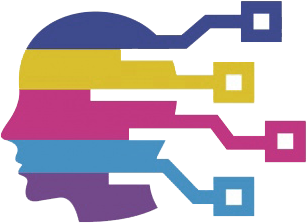After a five-year hiatus, OpenAI breaks new ground by releasing its first open-weight models—gpt-oss-120b and gpt-oss-20b—marking a pivotal shift in the landscape of artificial intelligence. This move signifies more than just an elaboration of technical milestones; it embodies a conscious effort to democratize AI, breaking down barriers that once kept powerful language models confined within corporate walls. For years, OpenAI maintained a guarded stance, prioritizing proprietary systems like GPT-4 and ChatGPT, which offered vast capabilities but limited audience access. With this release, the company boldly signals that AI should be a shared resource, accessible to creators, researchers, and developers worldwide, regardless of their infrastructure.
This opening resonates deeply with the current climate of technological innovation, where open-source initiatives have historically fueled progress but have often been at odds with commercial interests. OpenAI’s decision to re-enter the open-weight arena underscores a commitment to transparency and wider participation. As Greg Brockman rightly pointed out, this approach isn’t intended to undercut existing lucrative models but to complement them, fostering an ecosystem that benefits from both guarded innovations and unrestricted experimentation.
Technical Innovation and Practical Flexibility
The released models, gpt-oss-120b and gpt-oss-20b, are notably designed for versatility. They can operate fully offline on consumer-grade hardware, including devices equipped with as little as 16GB of RAM for the smaller model. This feature radically alters the traditional paradigm where AI models are predominantly cloud-dependent, offering users greater control over data, privacy, and operational resilience. The ability to fine-tune these open models for specialized tasks or integrate them into custom workflows paves the way for more tailored AI solutions in diverse fields, from education to enterprise.
OpenAI’s utilization of chain-of-thought reasoning—initially introduced in its newer models—adds a layer of sophistication to these open-weight models. Instead of mere pattern matching, they follow multi-step reasoning processes, closer to human thought patterns. Although these models are text-only and lack multimodal capabilities, their capacity to browse the web, invoke cloud services, and execute code as AI agents substantially enhances their usefulness. This versatility makes them not just powerful tools for academic exploration, but viable options for real-world applications where reliability, controllability, and customization are paramount.
The Perils and Promises of Open-Weight Models
However, the open nature of these models introduces complex safety considerations. Unlike traditional proprietary systems, open-weight models are accessible to anyone, including potential misuse by malicious actors. OpenAI’s step to delay the release for further safety evaluations illustrates the delicate balance involved—they recognize that unrestricted access can amplify risks such as misinformation, malicious automation, or even more sophisticated cyber threats.
In response, OpenAI has taken proactive measures by fine-tuning these models internally to assess vulnerabilities and potential misuse. The fact that they have measured the models’ resistance to risk and are actively working to mitigate threats demonstrates a responsible stance, but it also raises fundamental questions. Should powerful AI tools be so openly available when their misuse could have serious societal ramifications? Or does openness inherently promote innovation and accountability, encouraging a global community to collaboratively develop safety standards?
This tension underscores an essential truth: as AI models become more accessible, the responsibility shared among developers, regulators, and users exponentially increases. OpenAI’s approach demonstrates that transparency must be accompanied by responsible stewardship—an ongoing dance between openness and caution.
Transforming the Future of AI Development
OpenAI’s return to open-weight models signals a profound transformation in the AI ecosystem. It challenges the long-held notion that only closed, proprietary models can deliver groundbreaking results. By releasing these models under the permissive Apache 2.0 license, OpenAI empowers a broad spectrum of innovators to experiment, improve, and deploy AI solutions without restrictive barriers.
This move could ignite a renaissance of creativity and collaboration in AI development, where smaller labs, startups, and even individual enthusiasts contribute to refining models and exploring new applications. It also sparks a debate about the future role of corporate entities in fostering open science—whether they should serve as gatekeepers or facilitators of community-driven progress.
In essence, OpenAI’s latest foray paves the way for a more inclusive AI landscape. The tools now exist for widespread experimentation, capable of unlocking opportunities we have yet to fully imagine. As this new era unfolds, one thing remains clear: the democratization of powerful AI is not just a technical milestone but an ideological revolution—one that could redefine what AI is and who can harness its potential.

